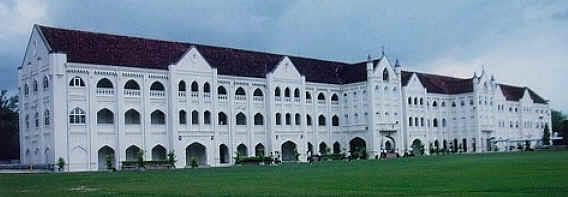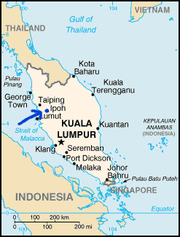 Daddy's School (St Michael Institution)
Daddy's School (St Michael Institution)
 The name Ipoh originated from a local tree, pohon epu or now more commonly known as pokok ipoh. This particular plant is used for the extraction of poisonous tree sap. The extract is used by the Orang Asli in their blowdarts. Ipoh is also known as san seng (Chinese : 山城) which means "hill city" in the Cantonese dialect. Ipoh is also known among Chinese Malaysians as "Pa-loh" (Chinese : 壩羅). The old nickname for Ipoh is "City of Millionaires", referring to the vast fortunes made during the tin and rubber days.
The name Ipoh originated from a local tree, pohon epu or now more commonly known as pokok ipoh. This particular plant is used for the extraction of poisonous tree sap. The extract is used by the Orang Asli in their blowdarts. Ipoh is also known as san seng (Chinese : 山城) which means "hill city" in the Cantonese dialect. Ipoh is also known among Chinese Malaysians as "Pa-loh" (Chinese : 壩羅). The old nickname for Ipoh is "City of Millionaires", referring to the vast fortunes made during the tin and rubber days.
Ipoh is located in the rich tin-bearing valley of the Kinta River. It grew rapidly as a mining town, especially in 1920s and 1930s. With the collapse of tin prices and the closure of the tin mines in the late 1950s, Ipoh's growth had stagnated and resulted in the migration of many young and bright talents to other parts of Malaysia, particularly Kuala Lumpur and Singapore. Ipoh has since been known colloquially as a "dead" city and a good retirement location. In spite of this, Ipoh still remains one of Malaysia's largest cities, with a population of 637,200 (2004) and urban area population of 798,800 (2004), placing it in the top five cities in Malaysia by population. Various efforts have been made to redevelop Ipoh into a modern town.
Ipoh has one of the cleanest and clearest water supplies in Malaysia, as the source is from the waterfalls in nearby Tanjung Rambutan. The Hospital Bahagia, a well-known mental hospital in Malaysia, is located in Tanjung Rambutan.
We will keep you posted agin. Time for more good food and activities.....

No comments:
Post a Comment